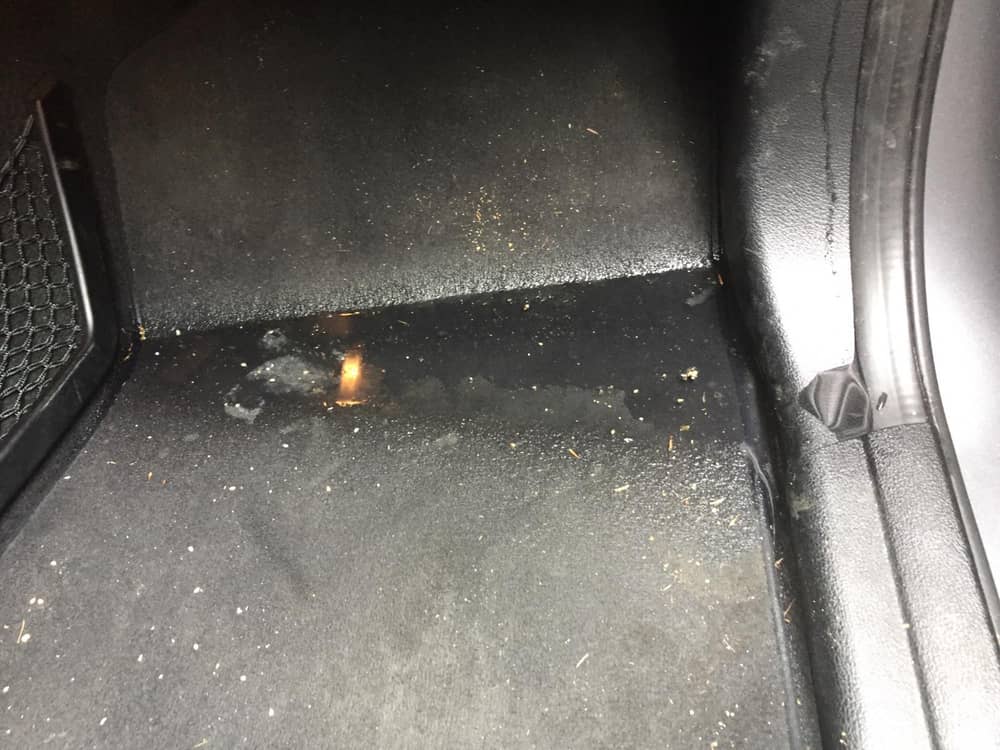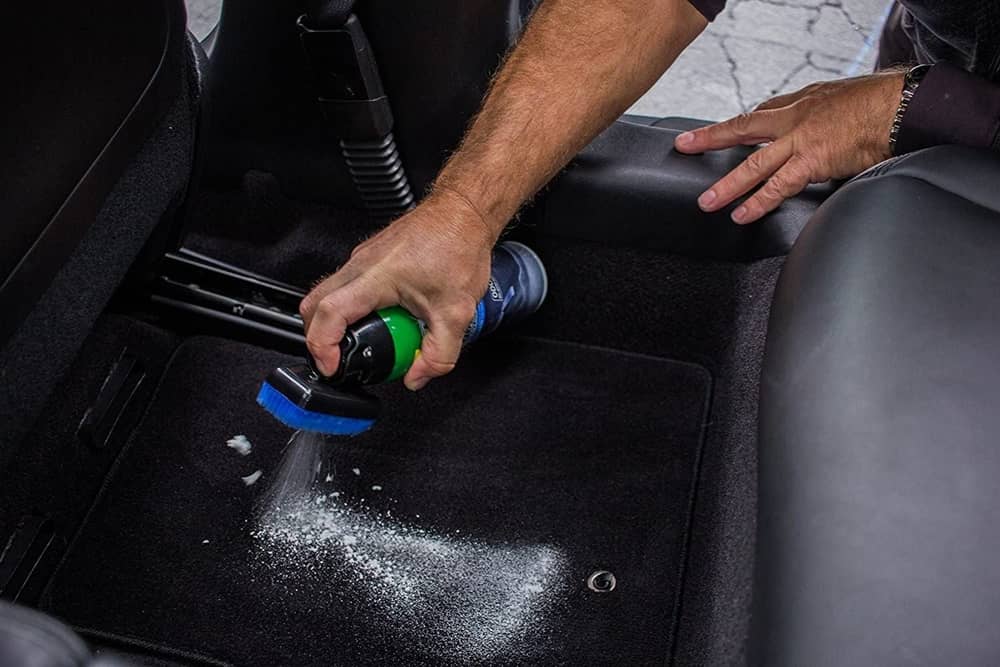Your Subaru water leaking passenger side? What should we do now?
Finding excessive moisture inside your Subaru is never a good thing, and you should take immediate action if you do.
When you get inside your car, have you ever had a strange feeling? Did it feel a little muggier than usual or smell differently than usual? You may experience a few of these signs if the carpet on your passenger side is moist.
This might be as simple as your baby spilling a freshly purchased juice cup or you strolling through a flooded region that you were unaware of.
If the cause of the damp carpet in your automobile is unclear, you should probably look into it further. We will go over some of the more frequent causes of wet carpet in Subaru vehicles below.
Reasons For Subaru Water Leaking Passenger Side?

Examine the causes listed below and compare them to the condition of your vehicle!
Air Condition Drain Hose
The A/C evaporator is a component that may leak if the heater core is not the source of the leak. Did you realize that your car’s air conditioner performs more than just circulating cool air via the vents? Although there is an immediate sense of comfort, the A/C system also contributes to removing heat from the cabin.
Your car’s air conditioning evaporator removes heat while also accumulating humidity. Usually, while you drive, this condensation just drips onto the road from the automobile. On a hot day, condensation is most usually what you see pouring from the underbelly of an automobile.
Unfortunately, the A/C evaporator drain, like the drains for the doors and sunroof, may clog. If the drain becomes clogged, water will collect beneath the dashboard and eventually flow into the front footwells.
Heater Core Leaks
It can be puzzling to find a puddle of liquid inside your automobile, but if it isn’t water, engine coolant is most likely the cause. Coolant often has a sweet aroma and is tinted green, orange, or pink. Give the puddle a whiff if it’s growing on the inside of your car and it doesn’t seem to be from rain coming in.
Hot engine coolant is transferred to the heater core to heat the air that enters the cabin when the heater is turned on. The heater core is a network of fins that disperses the coolant over a vast surface area, much like the radiator in your car.
Before it enters the climatic vents, the blower fan drives air across the heater core, warming it. This heater core may leak if it sustains damage or corrodes. Its location directly behind the dashboard means that if it leaks, coolant may end up in the passenger footwell as a puddle.
Leaking Sunroof
You can imagine getting droplets on your head or dealing with other dripping from the roof around the opening if your car’s sunroof or moonroof is leaking.
If any water spills past the sunroof, it gathers in the sunroof tray where unique drains allow water to safely drain out the bottom of the car. Any rain that enters the sunroof tray, however, could back up and leak into the cabin if these drains get clogged with debris.
This isn’t always the case, though, and it’s actually not all that common. This is so that water may be drained away and to the ground through channels in the sunroof and moonroof.
The water may enter if these drainage lines block up. The water will often find a path down the roof’s slope and descend to the ground as opposed to just dripping off the roof.
Windshield Seal
It’s simple to take for granted the seal that surrounds the doors of your car. But take into account the door’s rubber seal.
Weatherstripping lines are used on your car’s doors and windows to prevent rain and wind from entering while you’re driving.
Water and rain may be leaking through the door seal if anything has damaged it or if it has just worn out with time.
Water can seep past window seals, into the door panel, and then into the cabin, where it can result in water damage, foster the growth of mildew, and have other unfavorable effects.
Although seals and weatherstripping might suffer physical harm, the sun’s heat and UV rays are more likely to cause them to deteriorate, grow brittle, and shatter.
How To Clean Subaru Water Leaking Passenger Side?

If your carpets are wet or damp, the first thing you should do is clean them to avoid odors in the automobile. Furthermore, regular cleaning helps to maintain the carpet durable and mold-free.
Step 1: Preparation
In order to keep your automobile dry, park it in a garage or other covered space. To aid in the evaporation of moisture, leave the doors or windows of your car open when in a closed location. You can also let your automobile dry in the sun if the weather has improved and there is adequate sunlight.
As an alternative, closing the windows and doors while using the air conditioner will aid in sucking moisture out of the car if you are unable to dry it somewhere secure.
Step 2: Sop Up Pooling Water
Utilize a microfiber cloth to absorb any standing water. Certain towels are composed of microfiber, a synthetic material that absorbs more water than towels made of natural fibers.
Apply one of them to the wet region, pressing your fingers down hard to absorb the water. When using the other side of the towel, unfold it once more, refold it, and ring it out when it is completely saturated before continuing to pat dry.
Place towels on your seat if you need to move your car and it has a wet seat to prevent getting wet while you’re sitting down.
Step 3: Vacuum
Vacuum in your car with a wet/dry shop vac to suck up excess moisture. A shop vac is a special type of vacuum used to clean up liquid spills. Turn the dial on it to wet before you begin to suck anything up.
Rake the vacuum’s hose over the seat, carpet, and any and all surfaces that have gotten wet. Pay special attention to dry out the electronics and buttons around the interior, especially the ones on the door such as the window control buttons, or the car door speaker.
Step 4: Getting the Remaining Water to Evaporate
Install a fan in your car to create airflow and drive moisture out of the air. Install a window unit or stand-alone fan in the open car door or immediately next to it.
Until the water in your carpet has drained, let it run continuously for at least two days. After an area has dried significantly, move the fan to hit other damp spots.
A dehumidifier can also be used in place of or in addition to a fan to speed up the drying process.
Step 5: Continuing Dry Your Subaru Wet Mat
To aid in the drying of the foam underneath, raise the carpet from its sill beside the door. When the carpet in a car becomes wet, the moisture seeps down to the foam backing, which, if left damp, can develop mildew.
To raise the sill, create leverage under it using a tool like a screwdriver. To hold it open and create an air pocket, use something sturdy like a brick or wooden plank.
Towel up any extra moisture from beneath the carpet before using a fan or dehumidifier to exhaust any leftover moisture. Running the fan under the carpet for several days may be necessary to completely dry the foam.
Step 6: Using Damp Rid Bags
For the purpose of removing any leftover moisture, hang Damp Rid bags inside your vehicle. These bags absorb moisture where they are placed, so hang some from the handles on your car doors, your rearview mirror, or the seat backs. If Damp Rid bags are not available, open boxes of baking soda can be spread all around your car to have the same effect.
Step 7: Deodorizing And Preventing The Spread Of Mildew
If your carpet has mildew, clean it with a vinegar and water solution. Spray the remedy, then wait 20 minutes. After it has finished soaking, scrub it with a brush and then dry it with a towel or shop vac.
Once the mildew smell in your car starts to fade, repeat the procedure.
In addition to using tea tree oil and water, you can also use vinegar for standard dishwashing soap.
To make a solution, combine water and 10–20 drops of tea tree oil in a spray container. To be sure it won’t leave stains on your carpet, test it on a small area first.
Step 8: Treat The Lingering Mildew Stains
Any lingering mildew stains in the carpet should be treated with borax. Directly apply the borax to a mildew stain, and allow it to sit for around 10 minutes.
If the discoloration persists, repeat applying additional borax and vacuuming it up.
The safest remedy for any surface on your car is borax. Just be sure to sweep up whatever you scatter around to clean.
Step 9: Check All Carefully
Check to see if there isn’t a moist area you missed if you can still smell mildew.
Before setting the sill or the seats back, make sure everything is dry.
Whenever you start reassembling your car, check sure any damp surfaces are sufficiently dry. If the foam backing underneath the carpet isn’t completely dry, mildew can still flourish there.
Final Thoughts
Non-specialists may find it difficult to handle a Subaru water leaking passenger side. However, if you follow the procedures we’ve recommended, you’ll be able to handle it completely successfully. If you have any questions, please post them in the comments section and we will get back to you as soon as possible.
